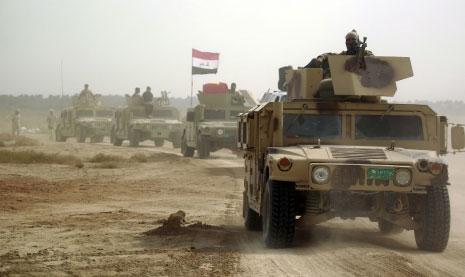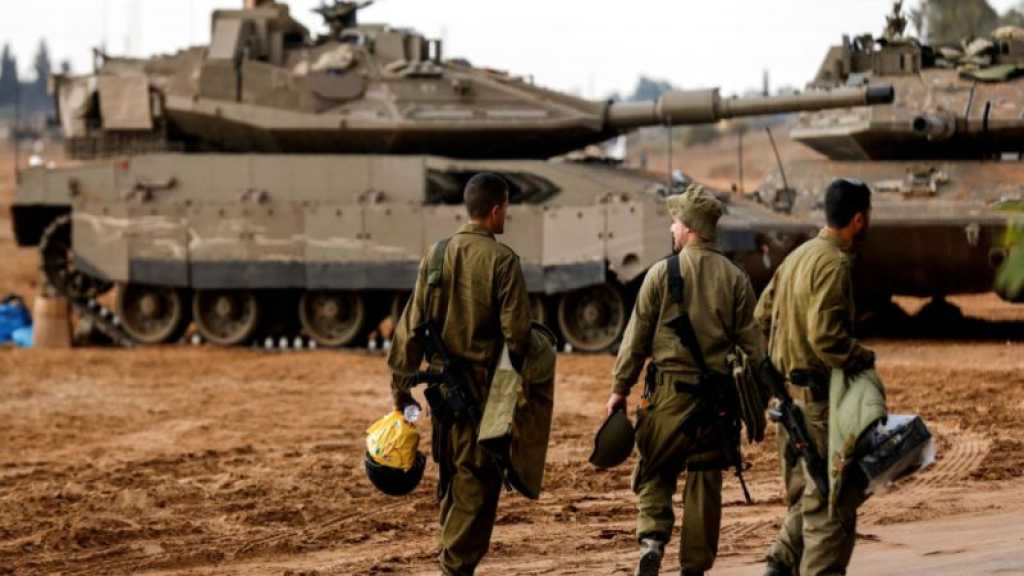’Daesh’ as Paper Tiger: ’Qasem, We Have Removed the Rocks’

Mohamed Nazzal- Al-Akhbar Newspaper
Finally, the Iraqi people did it. It only needed some help in planning and tactics which General Qasem Soleimani offered. It is now possible to say that [so-called] "Daesh" ["ISIL"] is no invincible army; on the contrary, it is only a "bogeyman" that has been exaggerated. "Daesh" is not something predetermined. Whoever is concerned about the matter has only to ask about the Jurf Al Sakhar "epic" which the Iraqis officially changed its name into "Jarf Al Naser" [victory bank].

"Daesh" is not a God. Despite that it has strong combat capabilities and thousands of militants that are willing to die, it is no invincible God. That "bogeyman" which wanted to become an unbreakable horror icon has finally been defeated. It is finally clear that "Daesh" is only paper tiger, though fighting it is serious. This matter has been practically proven about 3 weeks ago in Jurf al-Sakhar region in particular, which is known today as "Jurf al Nasr".
Of course, in this case, the American and Western media, in addition to the "oil-rich" Arab media, will show no interest in showing what happened in that region. However, according to the facts which field sources there are giving to al-Akhbar, it is possible to say with no hesitation that that "epic" is equal in importance to what happened in al-Qusayr, Syria, more than one year ago. It may even have surpassed it on the strategic level.
What happened in Jurf al-Sakhar was a historical achievement for the Iraqi armed forces which is composed of many military factions. Most of these factions have fought the American occupation, the most notable ones are: Hizbullah brigades- Iraq, Leagues of the Righteous, Bader organization, Brigades of Peace [which belongs to al-Sader movement], in addition to many other factions. General Qasem Soleimani, the commander of the Quds force in Iran's Revolutionary Guards, was the ‘star of the battle' with no debate. He is a shadowy man who has started to come out recently into the light. In the past few months, some pictures of him were spread that showed they were taken from Jurf al-Sakhar. His support for the Iraqi forces on the logistical and field level is no longer a secret.
The lesson learnt from Jurf al-Sakhar is that the Iraqi people have a certain strength that, should it be organized, it would have changed a lot of the "Daesh" reality in Mesopotamia. Also, it would then be able to crush the "Daesh" hordes just like it did in Jurf al-Sakhar to an extent which drove the leadership organization to flee from there completely. This might be consistent with what the Iranian Supreme leader, [the Leader of the Islamic Revolution, His Eminence] Sayyed Ali Khamenei said to the Iraqi prime minister, Heidar al-Abadi, last month: "We believe that Iraq, as a state and people, notably the youth of this country, have the ability to defeat the terrorists and establish security. There is no need for foreign presence in these countries."
What does Jurf al-Sakhar represent and what really happened there? This district is located within the Babel province and is distinguished with palm forests and vast synthetic bodies of water. It used to represent a crawling base towards the Shiite south by the "Daesh" leaders. Jurf al-Sakher lies in the middle between Baghdad and Karbala, though it is closer to the first. It is also an extension of the Fallugah district which represents one of the most important foci for "al-Qaeda" and "Daesh" in Iraq. That is why this geographical area used to be called the "death triangle".
After the year 2003, this region became one of the most significant prisons for the terrorist organizations in Iraq- "al-Qaeda". It was also the starting point for car bombs heading to Baghdad. In 2010, it became known as the capital of the southern "state" of the "Daesh" organization. It was from there that suicide bombers continued to strike at civil communities in Musayyib, Alexander, al-Hillah, Karbala, and Baghdad. Moreover, after the fall of Mosul, "Daesh" thought that Jurf al-Sakhar would be the reason for "the downfall of the Shiites" in Baghdad, Babel, Karbala, al-Najaf and al-Basra.
As a result, the terrorist organization worked on strengthening its military presence in the villages and rural areas that belong to Juraf al Sakhar. It also began to crawl last March towards Musayyib, reaching further than 100 meters from the famous rotor in the city which represents a passageway to southern Karbala. As the organization was crawling, it was confronted with Shiite organization groups which obstructed its further advancement.
It is almost impossible to count the number of insults that visitors of the Shiite holy places were faced with while on that road. Hundreds of innocent people were killed by numbs, firing guns, slaughtering and crucifixion. Many massacres remain engraved in the memories of the Iraqis of that region, at a time in which the social media did not record it and it remained hidden to the public. One time, "Daesh" closed the aforementioned road and the Musayyib Bridge, which forced the pilgrims and transients to use the road leading to Jurf al-Sakhar. The sources told al-Akhbar that the most atrocious of crimes against the disabled, the children, the women and men took place there. Some women were held as captives, raped and then killed after a while.
Historically, at the time of Saddam Hussein, Jurf al-Sakhr was known as a safe resort for terrorist gangs and a place where contraband dealers and criminal mafias were active. Even Saddam avoided it and his troops never for once stormed the place.
Before the liberation of Jurf al-Sakhar, and according to what the sources said, the American military army had reported to the Iraqis its incapability in striking any attack in the region. According to the Americans, "The Jurf al-Sakhar crisis can't be solved militarily as it is a land of old dense date trees, and "Daesh" is stongly present there. Hence, there will be repercussions".
Thus, what the Americans failed to do or, in other words, what they were afraid from and didn't even give it a try, the Iraqi military forces succeeded in doing so. They were supported by the "Quds forces" in the Iranian Revolutionary Guard with General Qasem Suleimeni as the leader, who had a major role in conducting the battle. Similarly, this is what is taking place today and will take place in the future as well.
Jurf al-Sakher stretches around 25 km in length and with an average width of 4 km. The attack began from 3 central points. Heavy gun fires were heard for about half an hour before the advancement to the fields from these central points, with the first point being from al-Fadilia village with its mission being to isolate the region from al-Amiriya Fallugah in the north. "Leagues of the Righteous" were responsible for the operations. The second axis, the southern one, which is directly linked to Jurf al-Sakhar, was responsible for entering the region from Bahbahab village to the "Hizbullah brigades". Meanwhile, the third axis which lies in the middle, is responsible for taking control of the villages that "Daesh" is present in. Those villages include: Aabed, Yaseen, and al-Farisiya.
The battle broke out and the fighting was fierce at a close distance against the militants of "Daesh". The fighters of the Iraqi forces saw in their own eyes how "Daeshis" fell to the ground and how the ones that remained alive strived to run away. At first, the terrorists of "Daesh" fought for their first defence-line using sniping and explosive devices that were spread intensely among the palm trees. However, that defence line collapsed immediately after the oriented and organized attack by the Iraqi factions [who by the way were not trained very effectively, but are organized].
Within hours, the Iraqi incursion into "Daesh" regions began, which surprised them after Iraqi fighters cut their supply lines and closed in on them. All the "Daesh" attempts at endurance failed and in less than 48 hours, the region was liberated after the failure of the American occupation, and following that, the official Iraqi forces for over a decade.
Sources which recorded all the events of the battle stated on behalf of some security officials that after hearing of what was going on in the battle field and what was happening to his members, Al-Baghdadi commanded that they prevent the captivity of any of the militants in his group and as result, they should "burn dozens of bodies and throw them into the river"....
The source added that, "That is exactly what happened. The militants received Baghdadi's message as simultaneously as they were running away from Jurf al-Sakhar. This is particularly when the factions of the center attack axis met with those of the south at Shahban and Hujayr."
The "Daesh" militants left behind them 4 armored vehicles and 3 Hammer devices. In addition, they were not able to withdraw other than on foot, or more precisely- "quick trot".
On one hand, the US gathers its international coalition to fight against "Daesh" in Iraq and Syria though it fails to liberate more than one village, whether in Iraq or Syria. However, on the other hand, the Iraqi militia fighters with their many different factions were able to claim their control of more than one Iraqi area. This is similar to what happened in Amerli [a huge area] even before Jurf al-Sakhar, and to what is happening today in the areas of Sad al-Azim, al-Saadiya and Jalawla.
Concerned sources claim that what can be concluded from the battles of Amerli and Jurf al-Sakhr is that the fighting factions against "Daesh" have very high moral and spirits today. This is a result of the broken psychological barrier that the terrorist group built through its atrocious acts against it enemies. The sources also confirm that the coming days will reveal more about this matter.
After the epic battle at Jarf al-Sakhar, and the spread of Soleimeni's pictures smiling from the field, a fighter from the Iraqi factions sent a message to one his friends to reassure him about the situation. It was a very concise message: "Qasem, we have removed the rocks".
Comments




